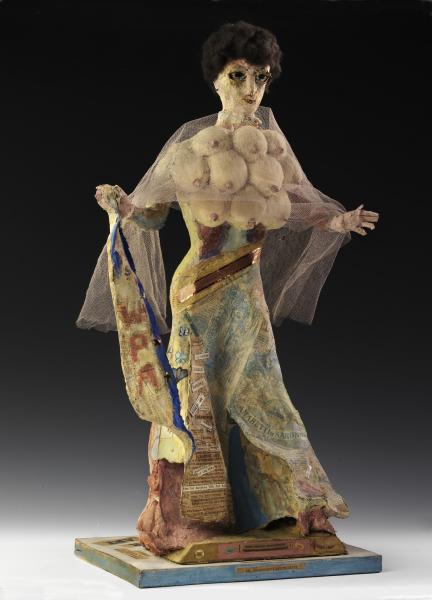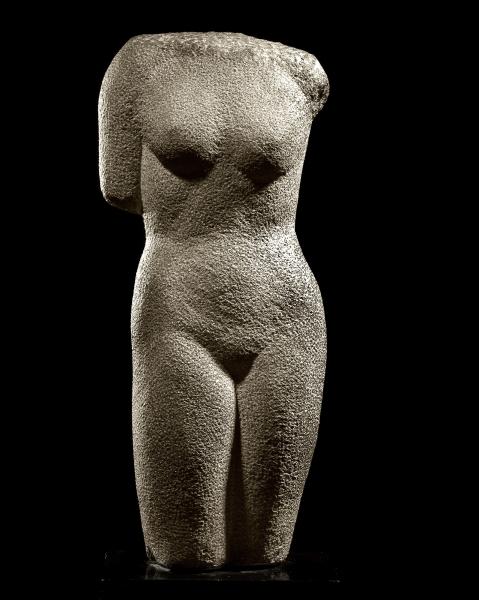Eugenie Gershoy, Homage to Audrey McMahon (Goddess of Fertility), 1977, papier-mache on wire armature with cut out paper and painted with egg tempera on wood base, Smithsonian American Art Museum, Gift of the artist, 1984.76
“Art just recently something to be secreted behind imposing walls, understandable only by the initiate, possessed solely by the millionaire, the luxury of luxuries. It is still not something that can be cooked for breakfast, and the artist is just a neighbor who might, if he were put to it, use a pick and shovel. The very obviousness of this is sad.”
-- Audrey McMahon, 1936, One year after the establishment of the Federal Art Program, which she directed.
Due to McMahon’s actions under the Federal Art Program, and the later Graphic Section of the War Services Division, thousands of works of art were made. Many artists in the SAAM’s collection were benefactors from this program; her legacy, although subtle, is obvious.
It can be hard to thread the needle of allegory; a woman depicted as a Goddess of Fertility could, accidentally, imply that all women should be like goddesses of fertility. Eugenie Gershoy’s depiction of McMahon as a ‘Goddess of Fertility’ is both deeply sincere, and tongue in cheek. This work is filled with visual upset: its use of papier-mache, and its roughly hewn edges make it unpleasant to look at, as well as a very individual piece of art. This work can really only be read uniquely; although it uses the allegory of the Goddess, it uses no other universalizing language. McMahon is commended here with a feminine role of power, but this work does not over-extend that allegory. It is just glad that McMahon existed to make art accessible and valuable.

